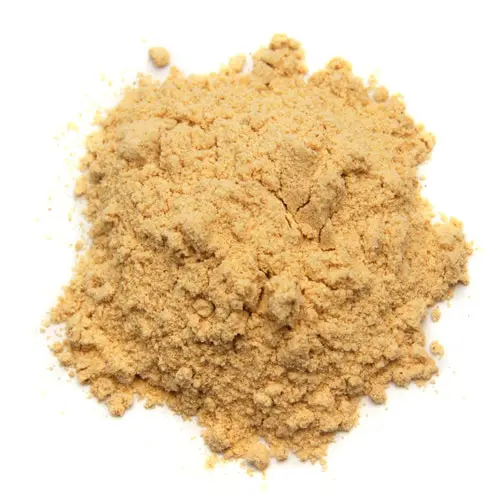Maca (Lepidium meyenii) is a plant native to the extreme high altitudes of the Peruvian Andes. In fact, it thrives only at altitudes of 8,000 to 14,000 feet above sea level. When grown at lower altitudes, soil treatments and pesticides become necessary, so it is important to know the origin of the maca being purchased.
Maca has a fascinating history, reaching back 3,000 years when Incas controlled the high Andes. Imperial warriors ate it before going into battle, and the warriors’ fearsome strength is attributed to this practice. Legend even had it that after a city was conquered, the women had to be protected due to the increased libido and ‘ambitious virility’ imparted by the maca. Maca was so highly valued by the Incas, it was reserved for use only by royalty (and of course the court’s armies).
Hundreds of years later, soon after the Spanish conquest of the region, the Spaniards’ livestock production was said to go into a steep decline. The local Indians are said to have recommended that maca be included in the animal’s feed to resolve the problem. The favorable results so astonished the Spaniards that it was recorded in detail. Maca’s esteemed reputation was evident in Colonial records from 200 years ago, in which demands for payments of 9 tons of maca were made of a single Andean region.

Historically, maca was used in Peruvian herbal medicine to treat anemia, menstrual and menopausal problems, memory enhancement, stomach cancer, and stress reduction, as well as to increase energy and stamina, strength and endurance.
Once colonial rule ended however, cultivation virtually stopped, except for small acreages planted for the farmers’ personal consumption. Production got so low, it was feared the plant would reach extinction. Fortunately, interest in maca started up again in 1961 when research showed it could increase fertility in rats. But it wasn’t until the 1990’s that things really took off. Athletes were becoming more aware of the harm that anabolic steroids and other such “enhancers” could cause, and were looking for more natural alternatives. They turned to maca for its reputed benefits of increased stamina and energy.
Maca’s nutritional value is quite high, with 59% carbohydrates, 10.2% protein, 8.5% fiber, and 2.2% lipids. It has a large amount of essential amino acids, and higher levels of iron and calcium than potatoes. It also contains fatty acids (including linolenic, palmitic and oleic acids). Maca is rich in sterols and has a high mineral content. It is thought that the beneficial effects on fertility are caused by its glucosinolates. Rich in sugars, protein, starches and essential minerals, it is a very important staple of the indigenous people of the high Andes.
Today, the health benefits of maca are proving to be just as the Incas believed them to be:
* It is thought that maca improves brain function, and is given to children to enhance their performance at school. A test tube study showed that the antioxidant content of maca leaf extract could protect against neurological damage.
*A study published in the International Journal of Biomedical Science showed that early post-menopausal women experienced relief from symptoms (night sweats, hot flashes), and even experienced increased bone density.
*Studies in rodents suggest that maca can reduce prostate size, due to the high levels of glucosinolates. Some call maca ‘Nature’s answer to Viagra’, because of its ability to normalize hormones such as testosterone, progesterone and estrogen, thereby slowing hormonal changes that come with aging.
*Aguila Calderon, MD, former Dean of Faculty of Human Medicine at the National University of Federico Villarreal in Lima states “Maca has a lot of easily absorbable calcium, plus magnesium, and a fair amount of silica. We are finding it very useful in treating decalcification of bones in children and adults.”
For more information:
Sources:
Ethnobiology and Ethnopharmacology of Lepidium meyenii (Maca), a Plant from the Peruvian Highlands
https://www.ncbi.nlm.nih.gov/pmc/articles/PMC3184420/
Maca
http://www.uofmhealth.org/health-library/hn-4392007#hn-4392007-uses
A Double-Blind Placebo-Controlled Trial of Maca Root as Treatment for Antidepressant-Induced Sexual Dysfunction in Women
https://www.hindawi.com/journals/ecam/2015/949036/
Published Third-Party Scientific Research on Maca
http://wholeworldbotanicals.com/published
-third-party-scientific-research-on-maca/
Maca (L. meyenii) for improving sexual function: a systematic review
https://bmccomplementalternmed.biomedcentral.com/
articles/10.1186/1472-6882-10-44
Maca
Videos:
YouTube links:
What is Maca Root and Why is It a Superfood?
https://www.youtube.com/watch?v=yMcIoQQjqnU
Benefits of Maca Root

